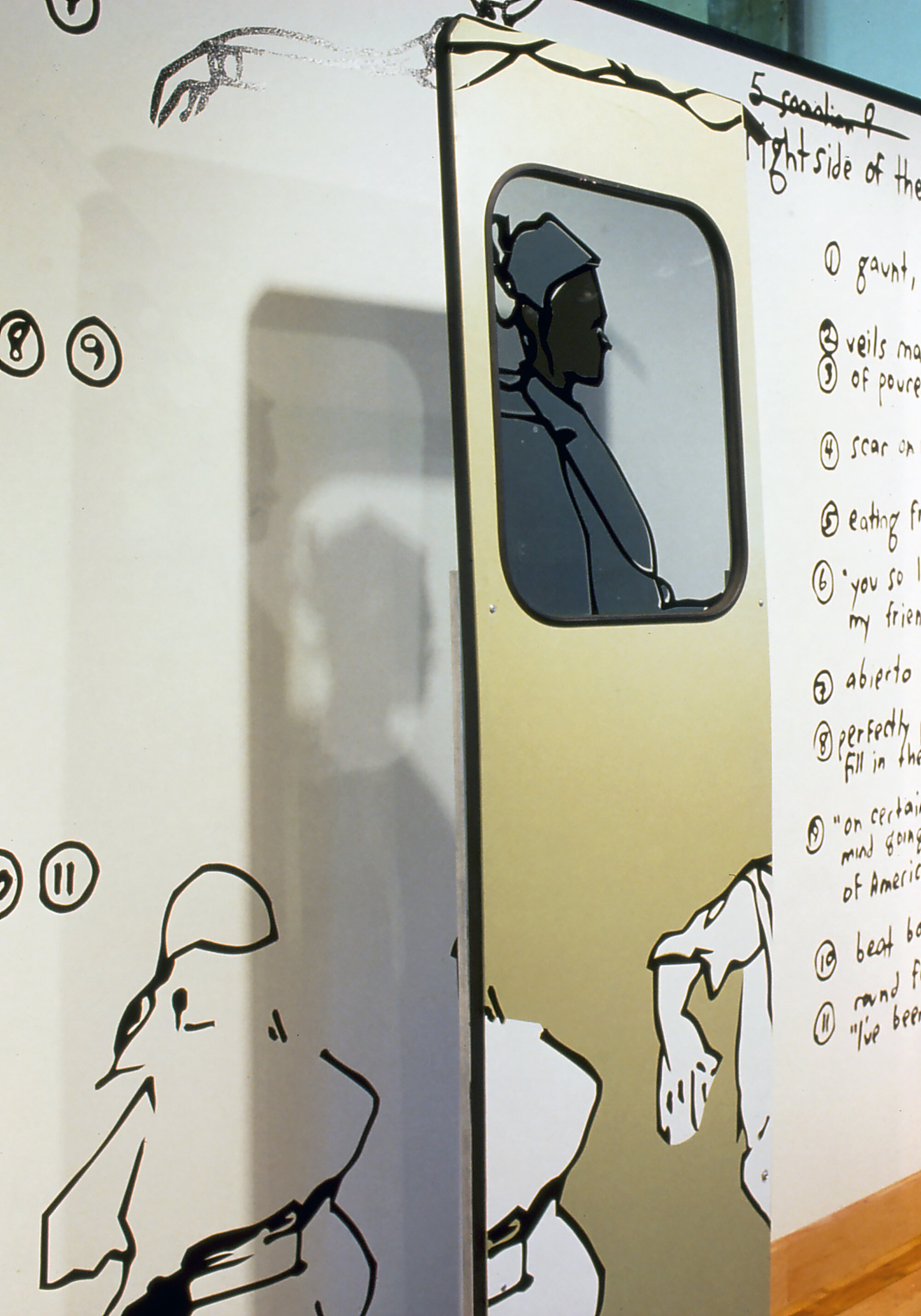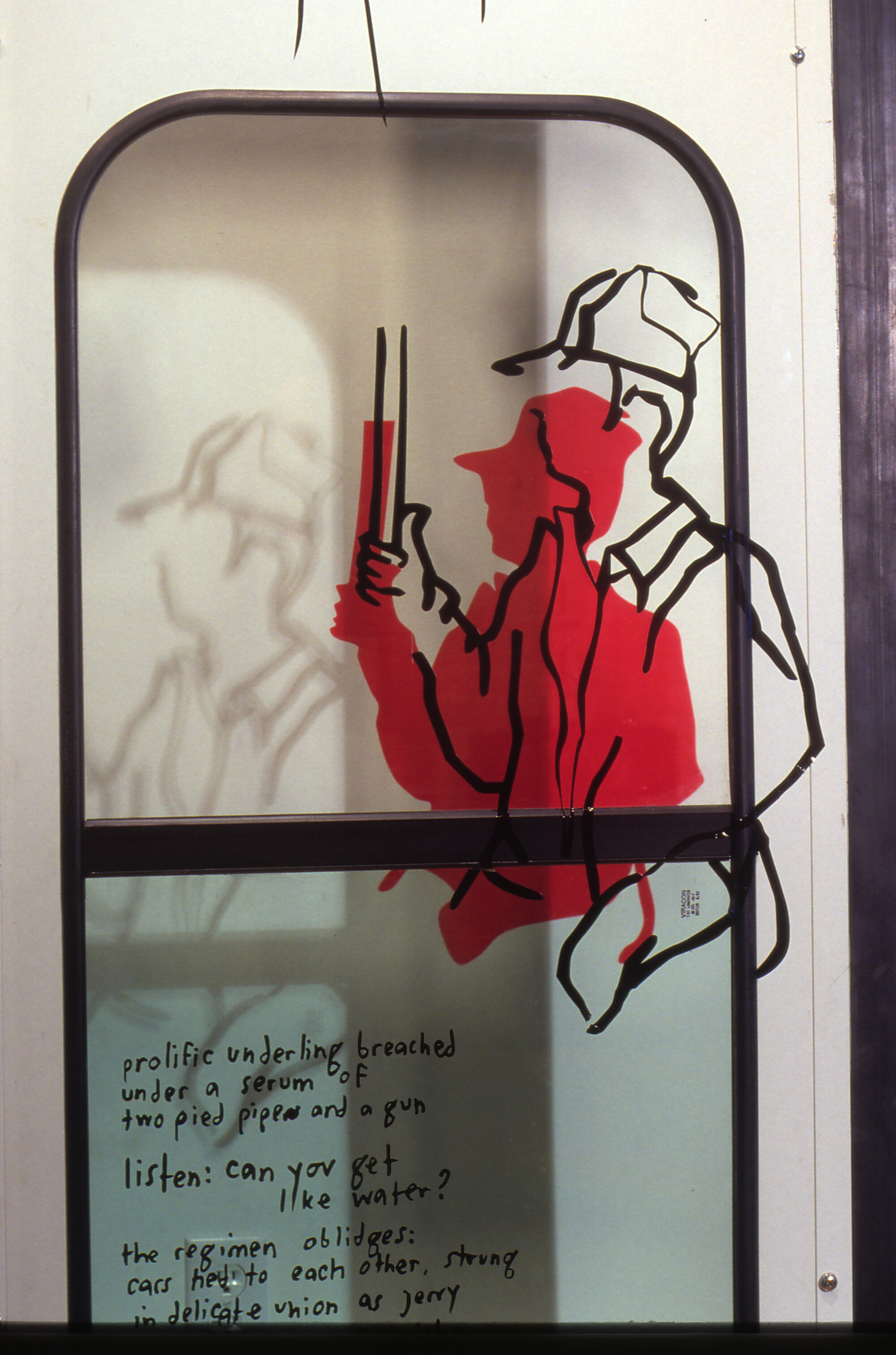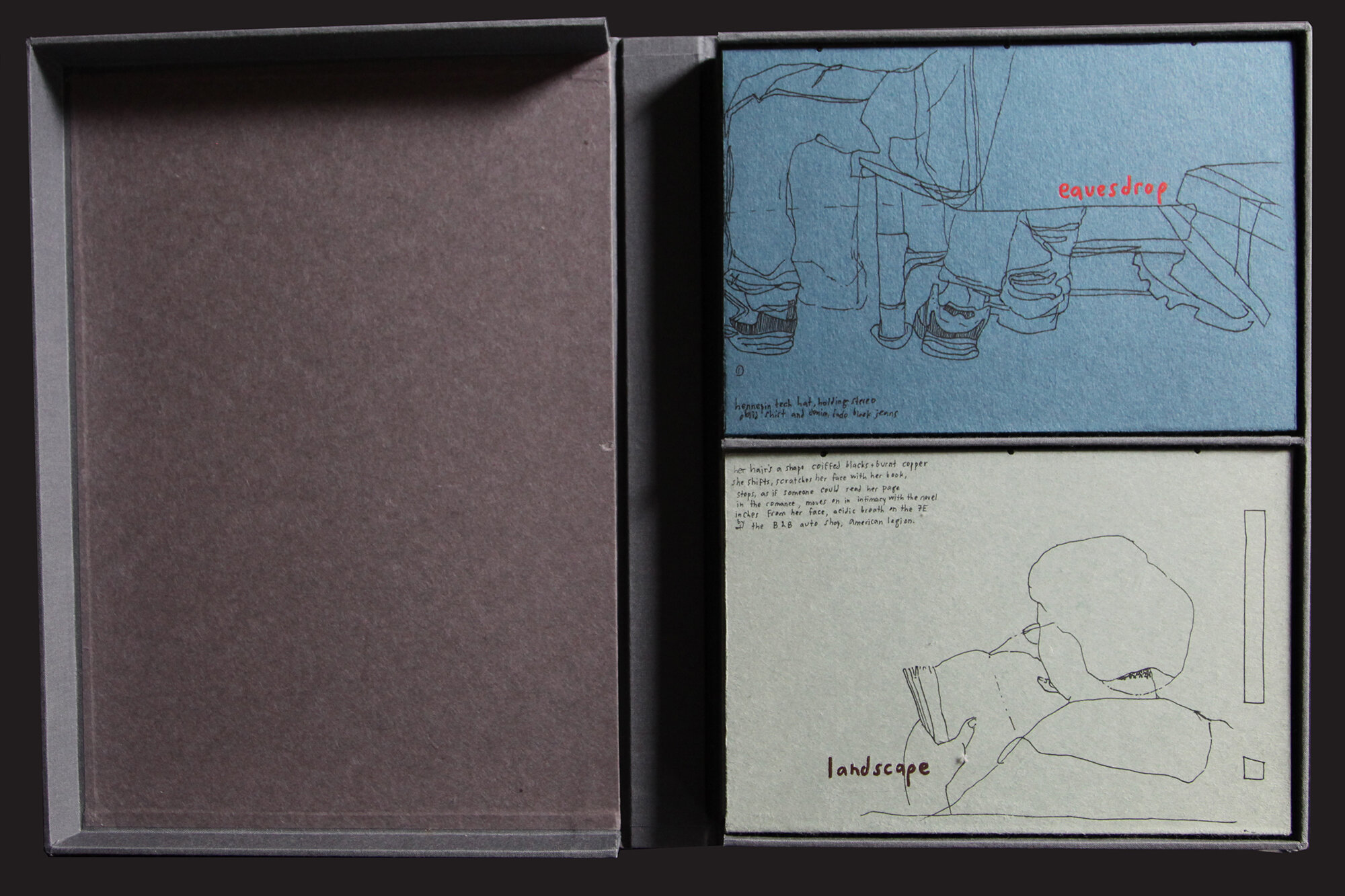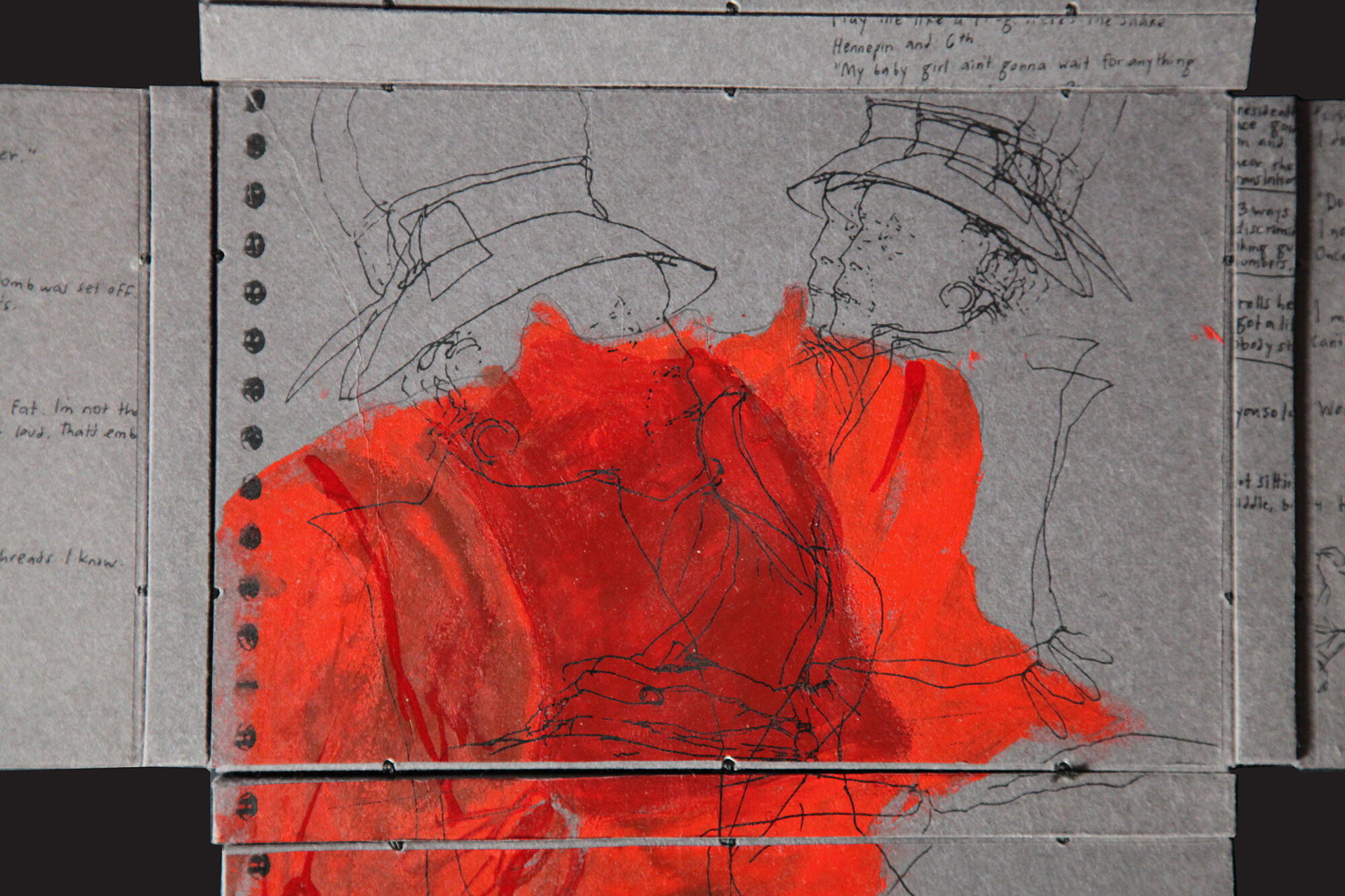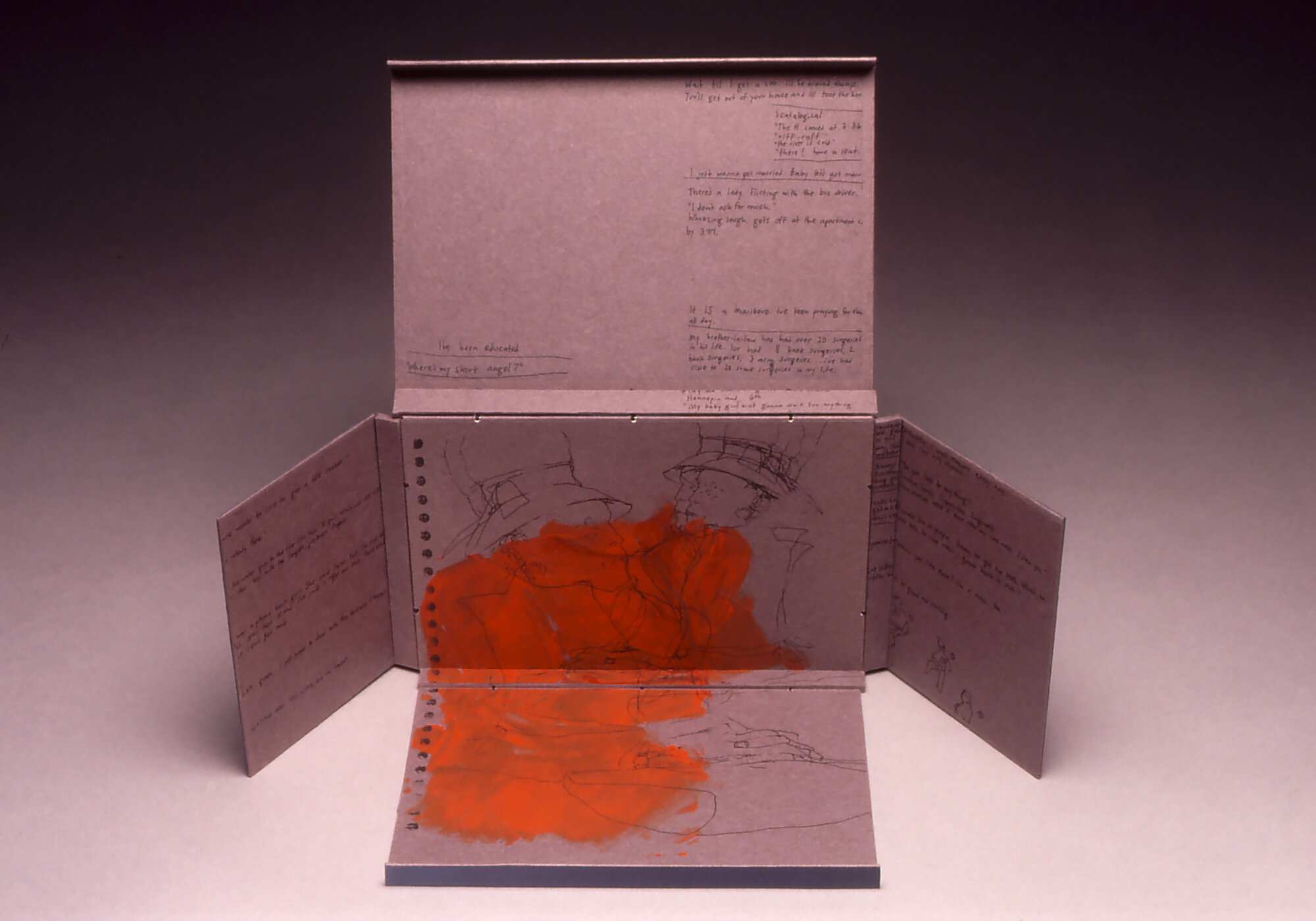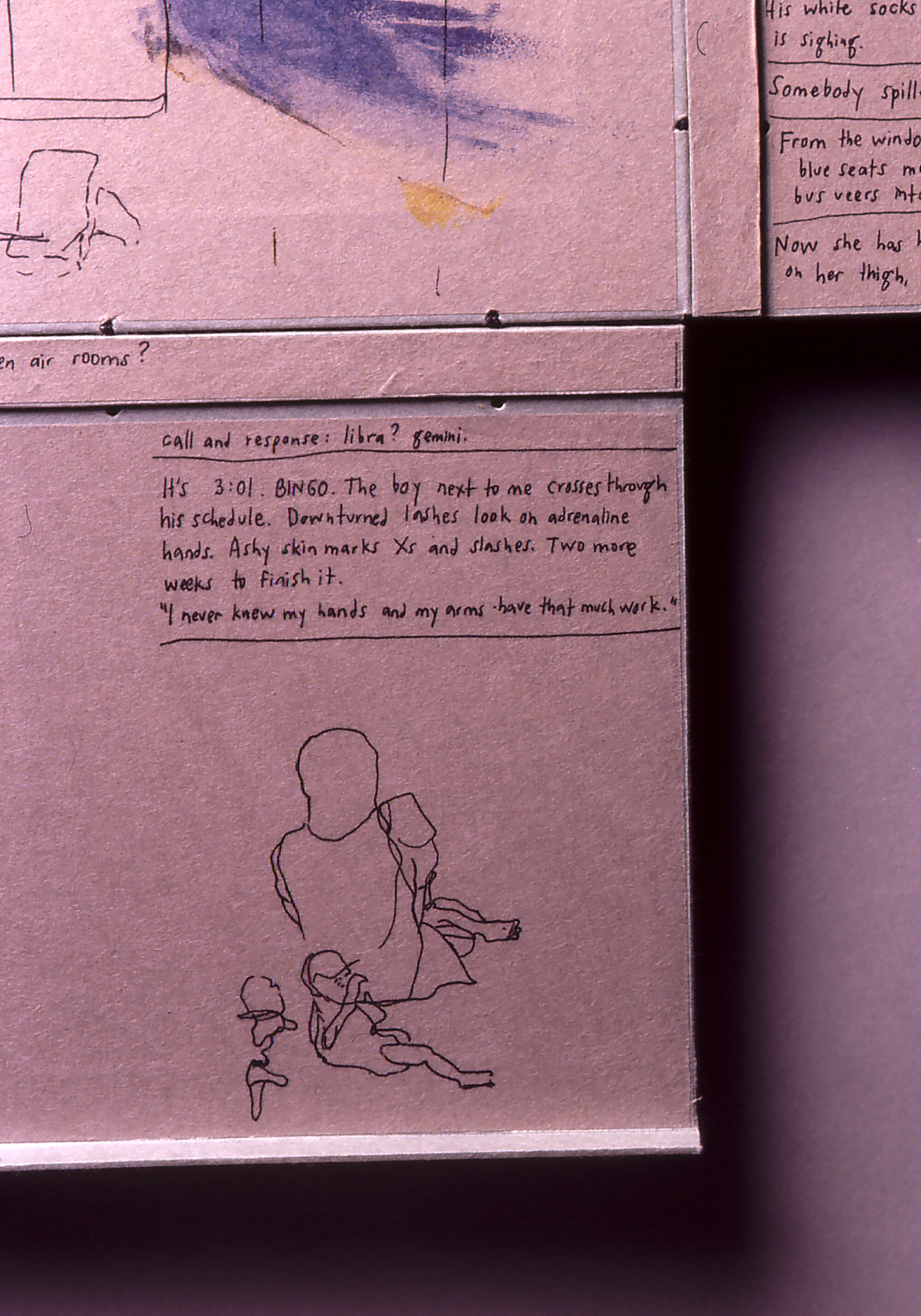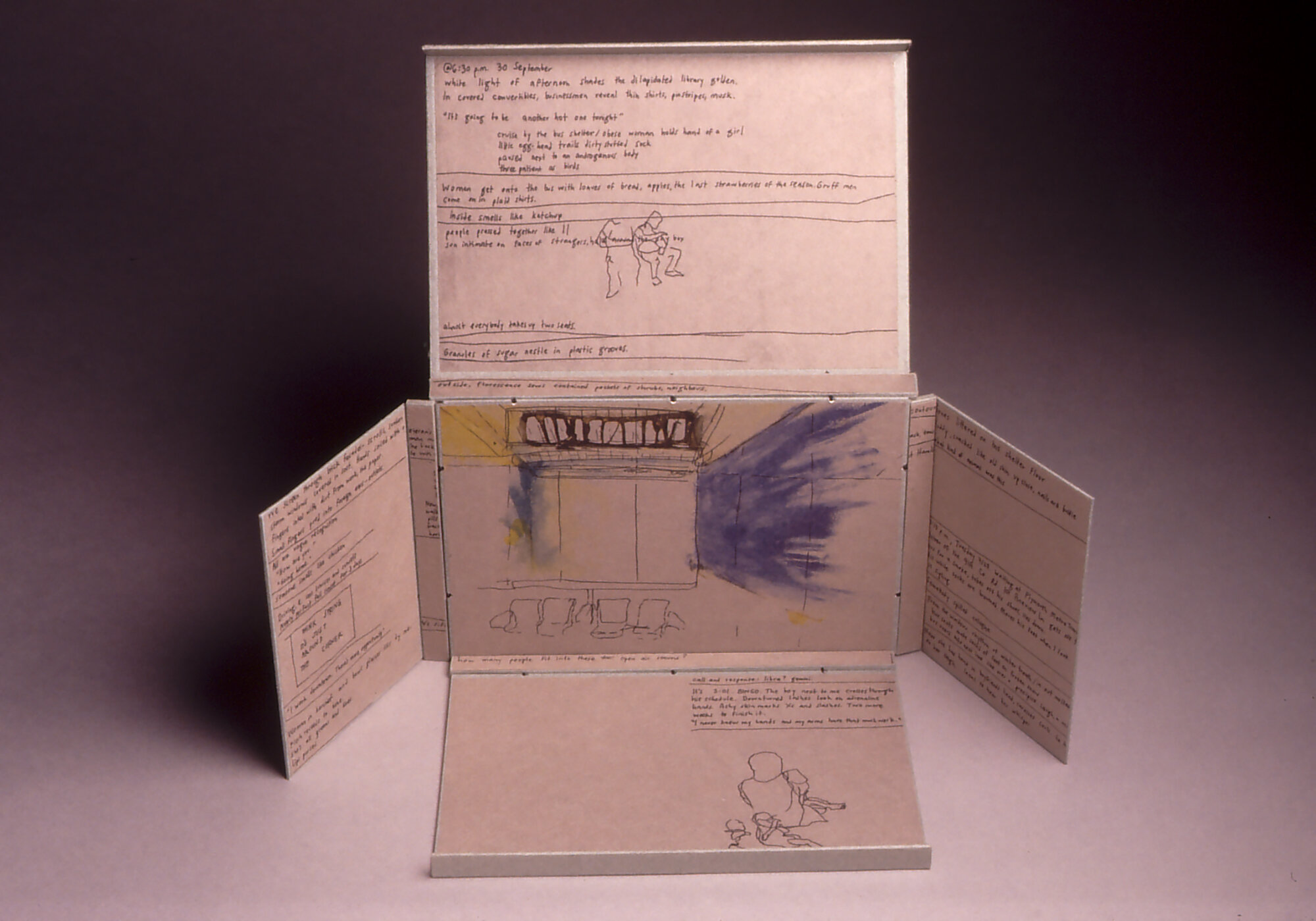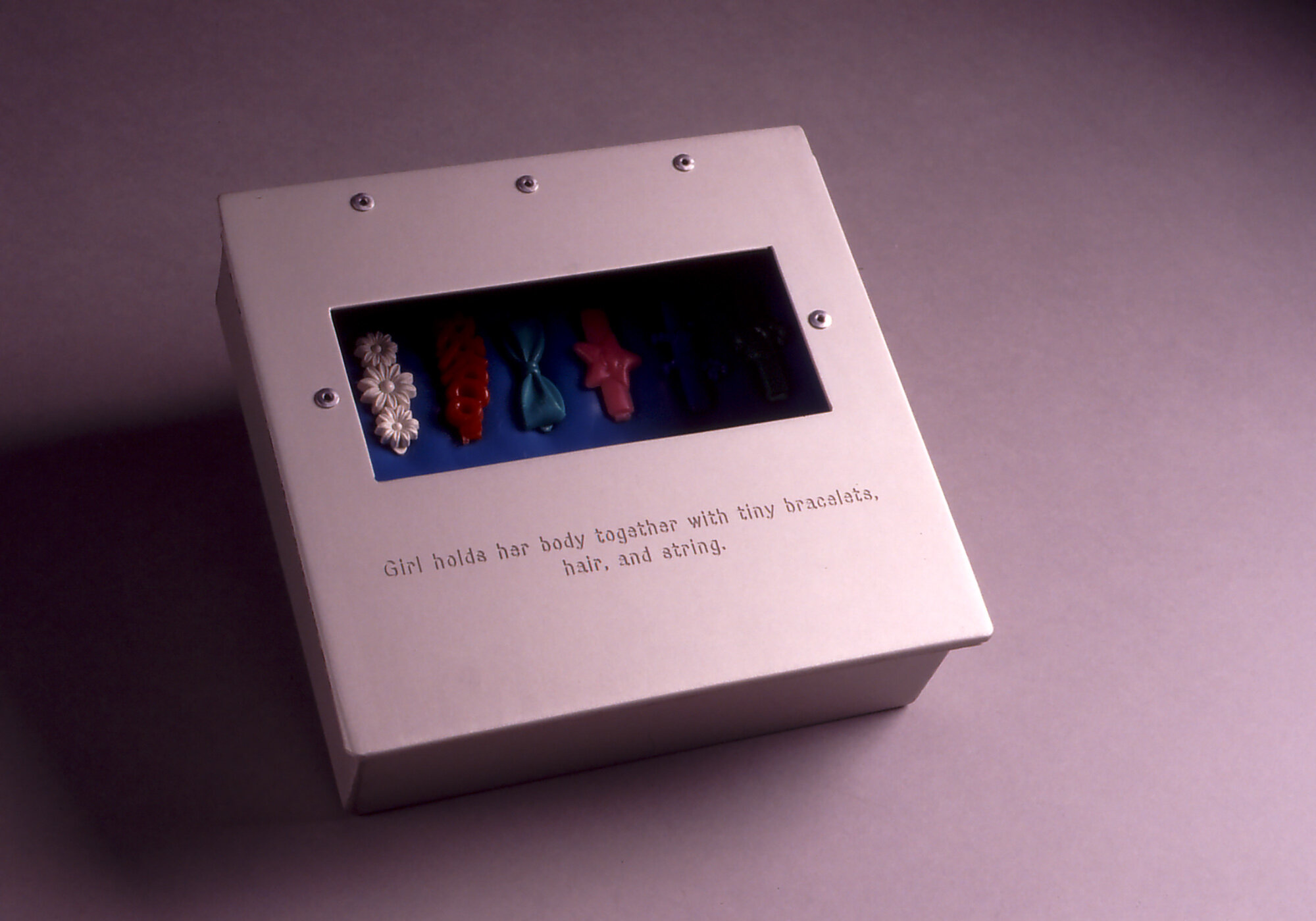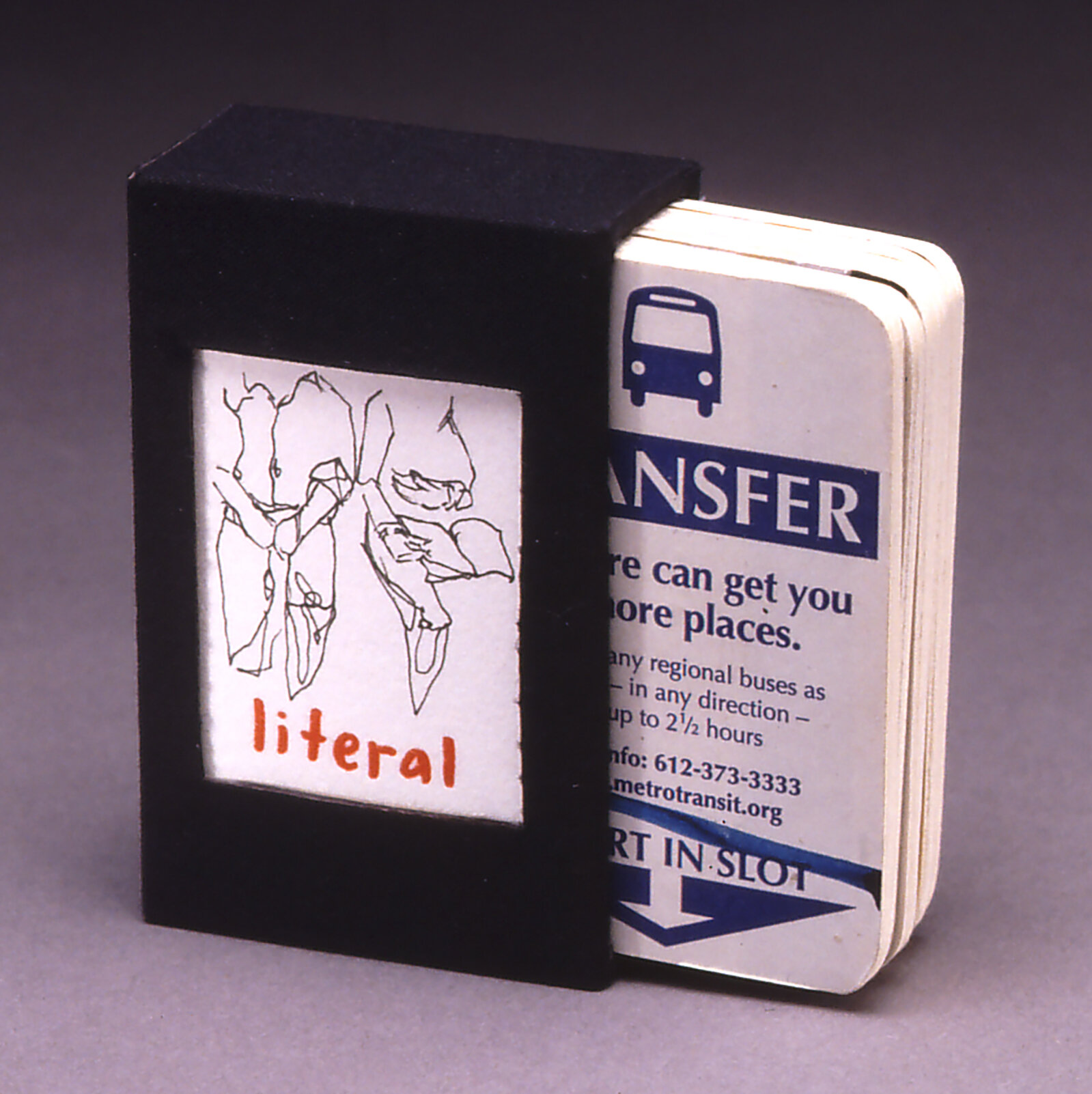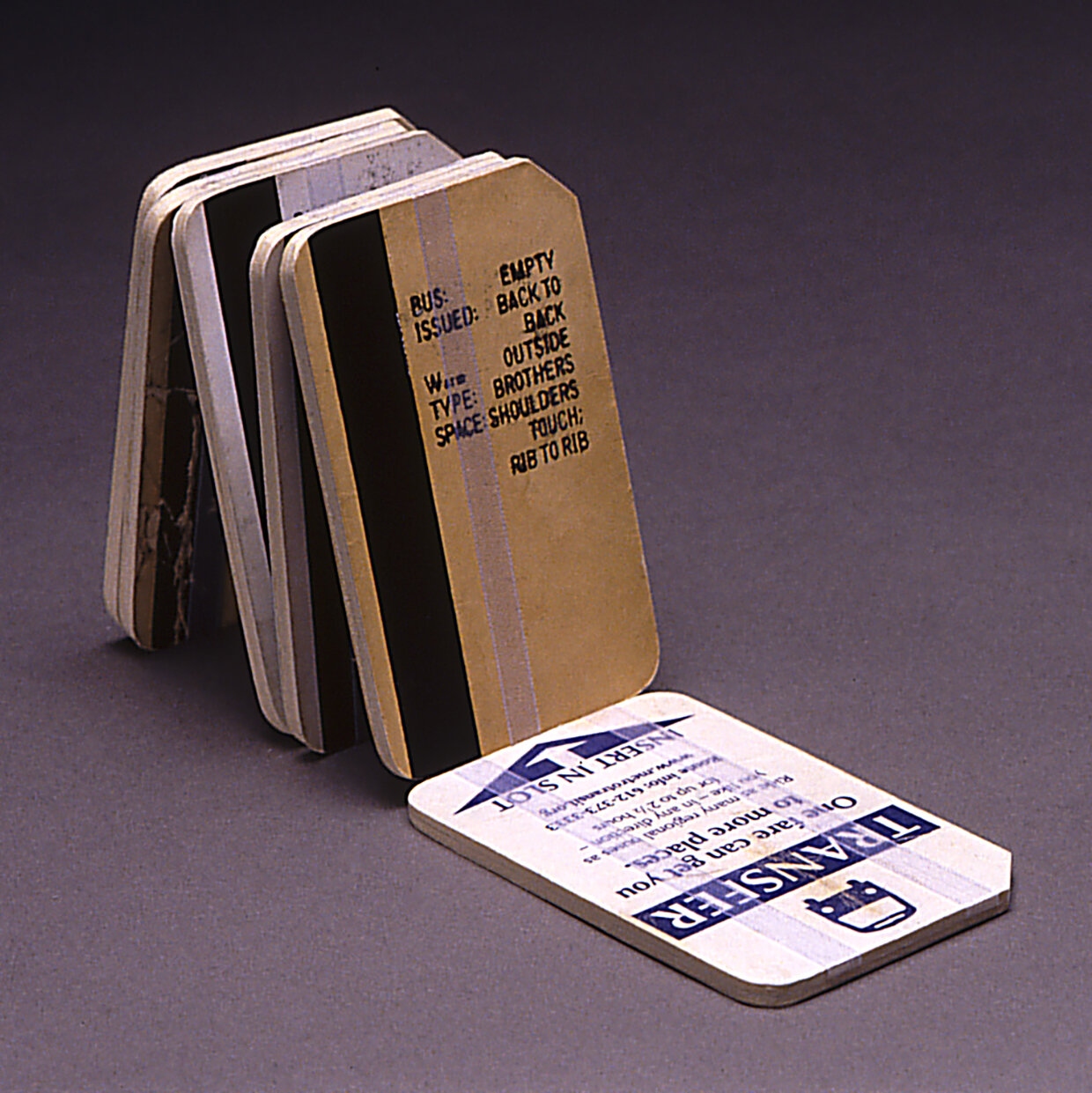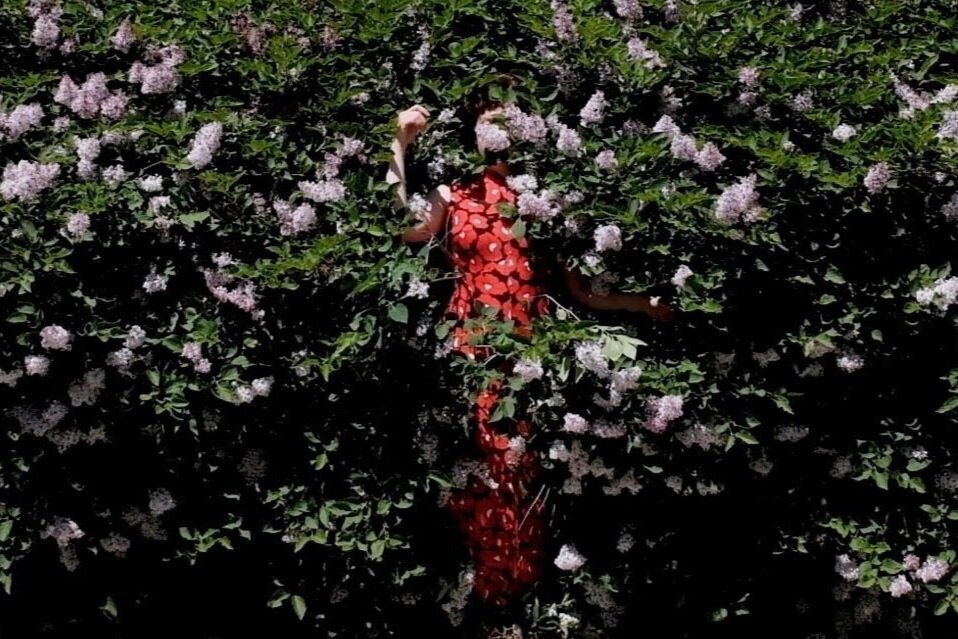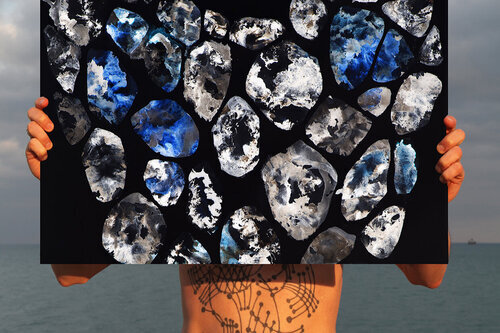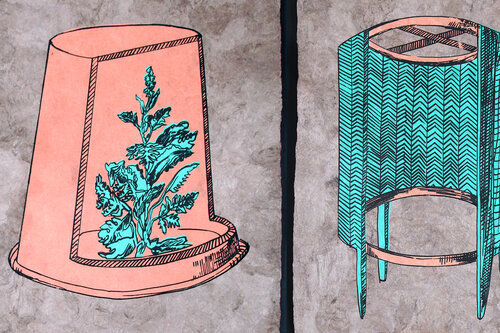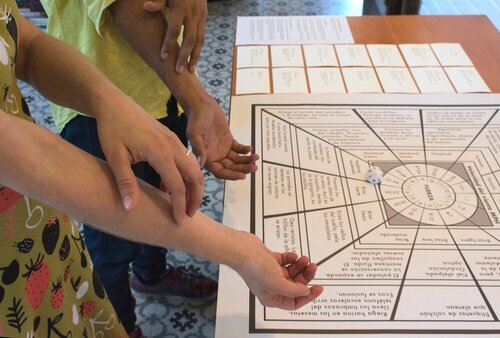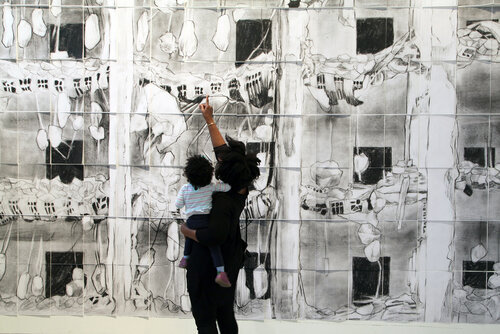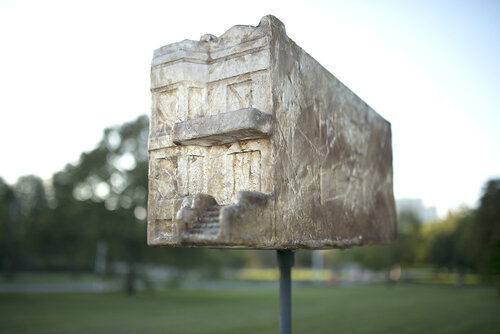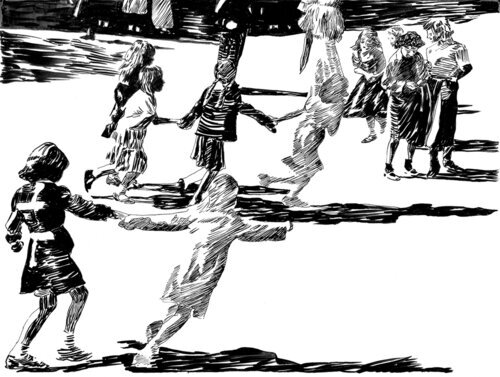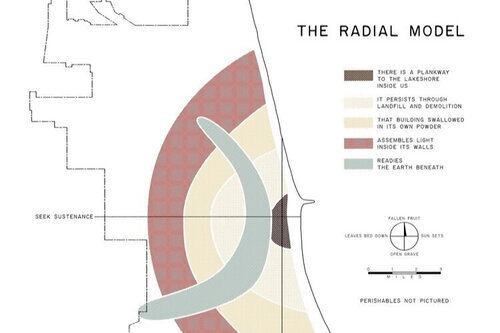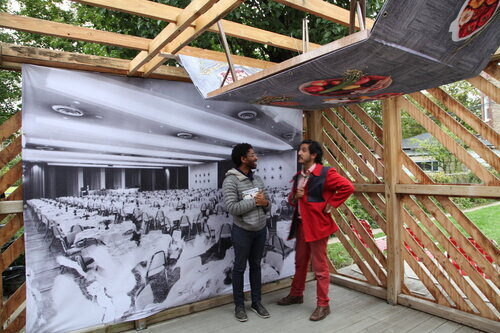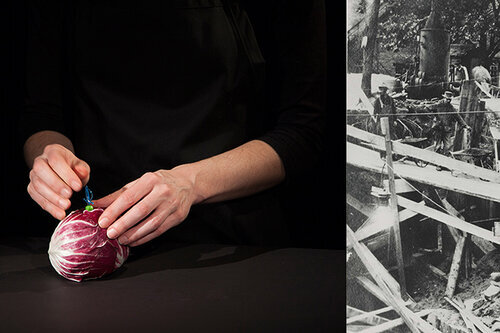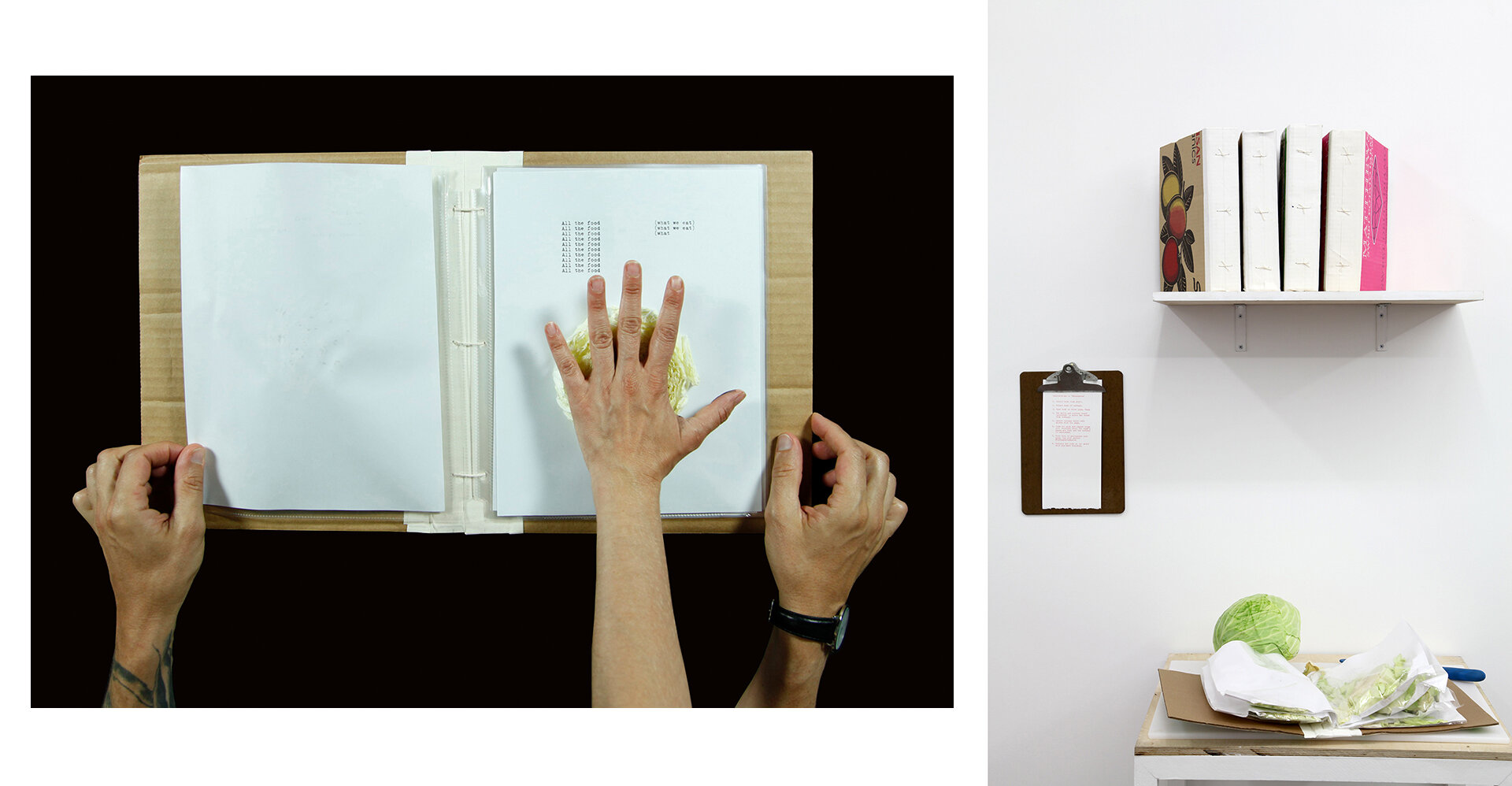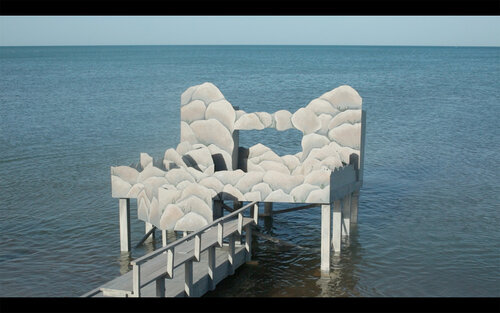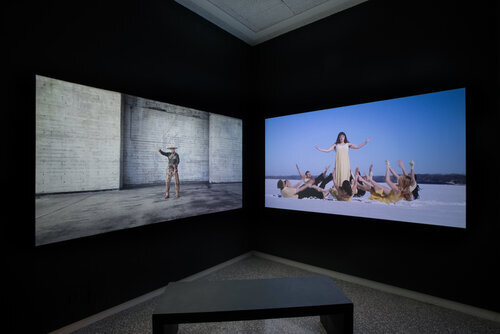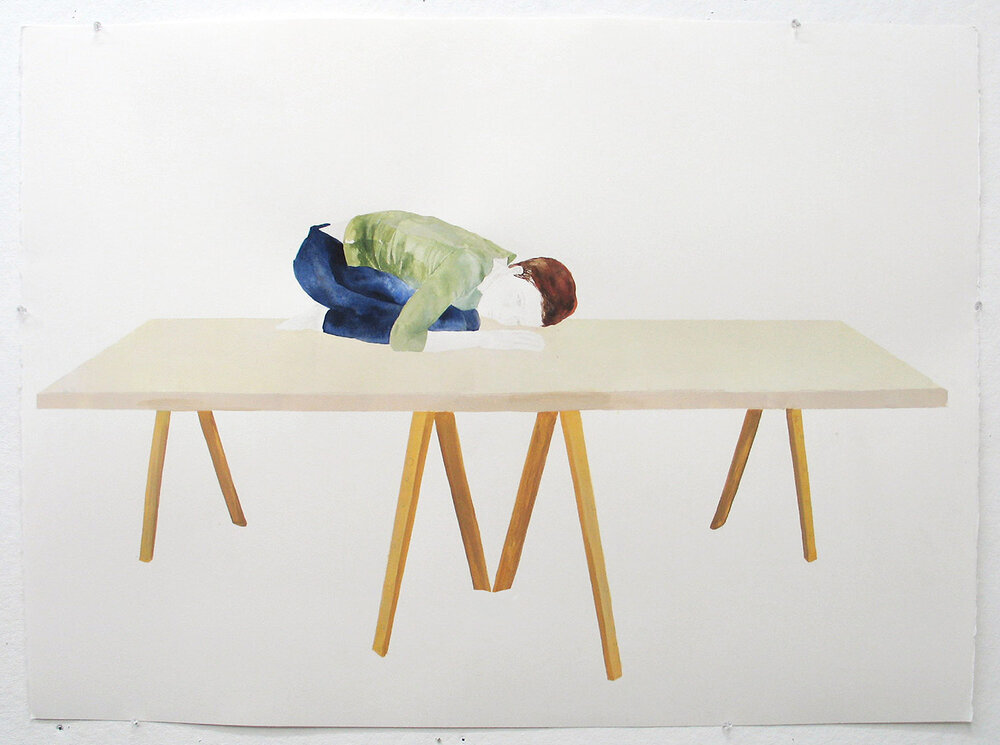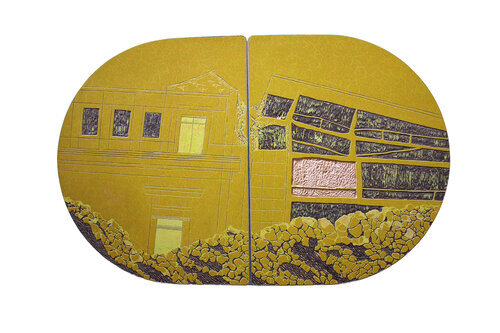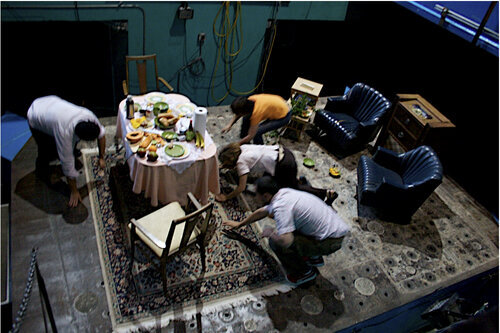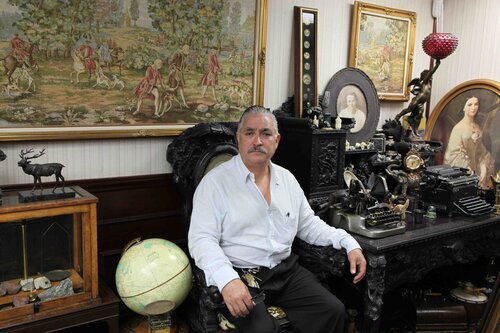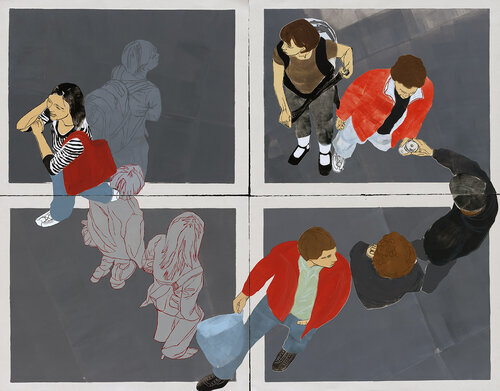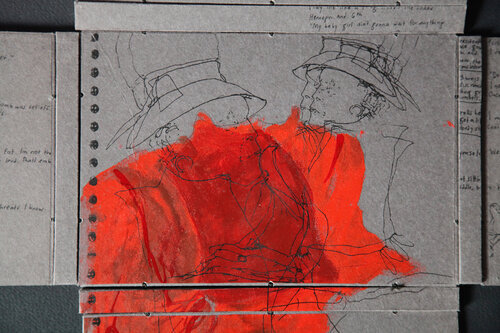Bus Parts (2001)
“Over the past four seasons, I’ve talked to a foster mom about tough love, been thrown off my seat by a James Brown flirt, and sung country with an ex-trucker. These were all my drivers. I’ve waited through windstorms with old ladies in rose- colored glasses, and watched boys kneel down to pray on concrete under bus signs. I’ve stared at arthritic fingers, quilted jackets, pierced veins, bloody knuckles, toy dolls, bruised children, décolleté. Welcome aboard.”
I didn’t begin driving until my mid-twenties. For many years, the bus was my carrier. When I created Bus Parts, I was riding the bus an average of two hours a day between jobs at a youth shelter and a museum. I was attuned to seeing the charged space of the bus as a microcosm of larger society. Any point of tension, conflict or relation gets compressed on the bus. People leave each other personal remnants, like the smudge of hair grease on a windowpane or the lingering scent of perfume.
Reflecting on the communal and sensory nature of metro transit, Bus Parts consisted of four projects, each incorporating objects from the bus—adapted transfer cards, sticky-back vinyl on bus doors, written interviews with drivers and riders, flooring, boxes crafted from the side panel of a bus. Together, they explore compressed public space, and issues of privacy, perception, and public personae.
Passage is a large-scale installation—or spatial book that reads both forward and backward. Its ‘pages’ are made up of four bus doors.
As much of the relating that occurs on the bus is unspoken, the exchange in the Conversation boxes—an interplay between diary and dialogue—is written. Landscape deals with the general social fabric and routine of the ride, Eavesdrop holds more personal stories. Individual pages within each box may be shifted and mingled like random thoughts and bits of conversation overheard.
Fabricated of aluminum bus metal, Visceral is a series of book-objects created from the side panel of a bus. Each functions as a kind of portrait, through a line of text, a color, objects, and smells, including body odor, baby powder, smoke, and after shave.
Literal describes the interpersonal interchange implicit on the bus via altered bus transfers.
Passage, four bus doors with vinyl transfer, rubber flooring, 28’ x 16’ (installation)
Literal: transfers letterpress printed from photopolymer plates, board and sheer ribbon with slipcase; 2-1/4” x 3-5/8” x 7/8”
Conversation: 10” x 14” x 1.5” clamshell box with foil stamp, with two 9-3/8” x 6-3/8” x ¾” fluid hinged boxes, with loose 5.5” x 8.5” digitally printed pages
Visceral: 10” x 10” x 4” engraved aluminum boxes with plexiglass windows, containing scented and colored wax and objects including barrettes, cigarette foil, plastic shards, cloth scraps.
Conversation book structure fabrication by Harold Kyle
Bus doors and transfers provided by Metro Transit. Text in Conversation based on interviews with fellow bus riders and drivers, including Richard Stephens
Produced in 2001 during Jerome Fellowship at Minnesota Center for Book Arts; exhibited by St. Paul Mayor’s Office

